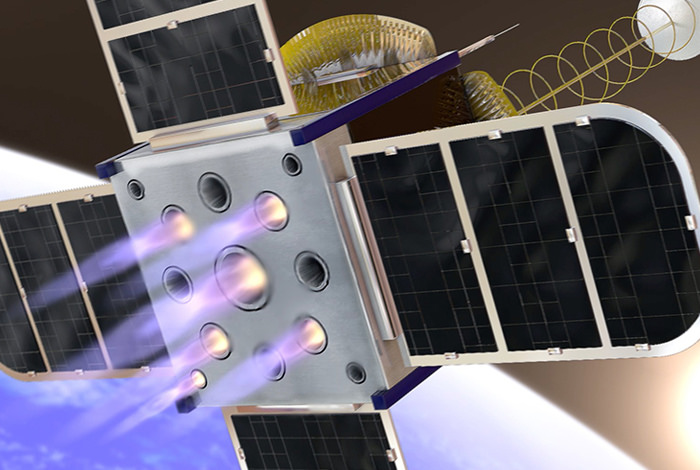Now, thanks to a new rocket motor concept developed by a team from Los Alamos Laboratory in the US they could be about to become even more useful.
The primary roadblock to CubeSat propulsion has always been safety. Typical spacecraft propulsion systems utilise fuels that are intrinsically hazardous, like hydrazine, or compressed gasses. Since CubeSats are usually deployed via “rideshare” or “piggyback” on a larger satellite deployment or other large space mission, even a small margin of risk is unacceptable.
However, the Los Alamos team has tested a six-motor CubeSat-compatible propulsion array that it claims could address these concerns. “I think we’re very close to being able to put this propulsion system onto a satellite for a simple demonstration propulsion capability in space,” said Bryce Tappan, lead researcher on the CubeSat Propulsion Concept team
The concept under development is a solid-based chemical fuel technology, but differs from classical solid propellants because it is completely non-detonable, making it much less hazardous.
The technology is called a “segregated fuel oxidiser” system where the solid fuel and solid oxidiser are kept completely separate inside the rocket assembly. Mixed fuel and oxidiser systems are much more common and significantly more unstable.

“Because the fuel and oxidiser are separate,” said Tappan, “it enables you to use higher-energy ingredients than you could use in a classic propellant architecture. This chemical propulsion mechanism produces very fast, high-velocity thrust, something not available with most electrical or compressed gas concepts.”
The rocket motor works in many of the same ways as a conventional chemical rocket motor. A pyrotechnic igniter provides the heat to initiate burn in a high-nitrogen, high-hydrogen fuel section, releasing gasses very rich in hydrogen. Those gasses flow into the oxidiser section and the chemical reaction there creates tremendous heat and expanding gasses that flow through a nozzle creating the bulk of the motor’s thrust.
“Propulsion is desirable on CubeSats because it’s an enabling technology that greatly expands the mission-space of these small satellites,” said Tappan. “It would allow CubeSats to enter higher orbits or achieve multiple orbital planes in a single mission, and extend mission lifetimes. Another desirable application would be a ‘de-orbit’ capability.”
NASA currently tracks approximately half a million individual pieces of “space junk” in various orbits around Earth. Eventually small satellites will have to demonstrate a compelling mission before they can be launched, or have a de-orbit capability so they can burn up in the atmosphere and not add to the space junk problem.




Collaboration to address viable solutions for VAWG database
<blockquote>address the lack of standardisation, coordination, and collaboration of gender disaggregated data intelligence across various regions,...